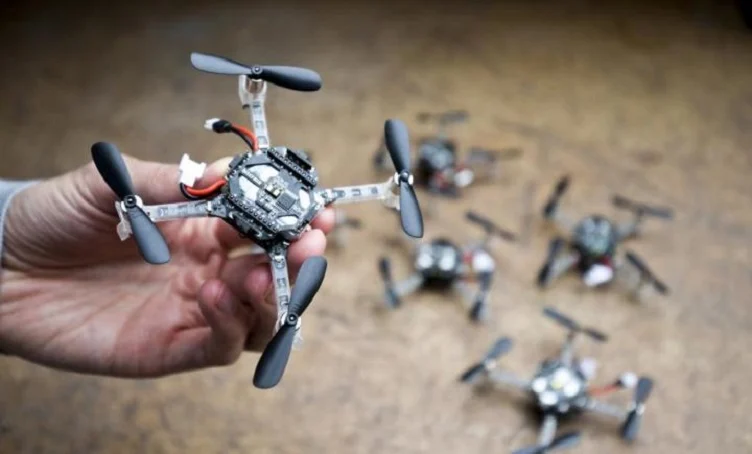UAE swarm robotics disaster response initiatives are transforming how the nation handles emergencies. The United Arab Emirates (UAE) is at the forefront of integrating these advanced robotic systems into disaster management strategies. Swarm robotics—a system where multiple autonomous robots work together—are being tested to enhance search and rescue operations, assess damages, and provide logistical support in hazardous environments.
What Is Swarm Robotics?
Swarm robotics is inspired by the collective behavior observed in nature, such as the coordinated movements of ants or bees. In this system, individual robots operate based on simple rules and local information, leading to complex group behaviors without centralized control. This decentralized approach allows for scalability, flexibility, and robustness, making it ideal for dynamic and unpredictable disaster scenarios.
UAE’s Initiatives in Swarm Robotics for Disaster Response
Technology Innovation Institute’s Role
The Technology Innovation Institute (TII) in Abu Dhabi has been instrumental in advancing swarm robotics for various applications, including disaster response. TII has developed AI-powered drone swarms capable of autonomous navigation and decentralized coordination, enabling them to perform tasks such as infrastructure monitoring and environmental conservation. These drones can adapt their behavior in real-time, responding to environmental changes and emerging threats without human intervention. TII

Real-World Applications and Testing
The UAE has conducted several field tests to evaluate the effectiveness of swarm robotics in disaster scenarios. These tests simulate conditions such as collapsed buildings, hazardous material spills, and areas with limited access. The drone swarms demonstrated capabilities in mapping disaster zones, identifying survivors, and delivering supplies, all while navigating complex terrains autonomously.
Collaboration with International Partners
Recognizing the global nature of disaster response, the UAE has partnered with international organizations and research institutions to enhance its swarm robotics capabilities. These collaborations focus on sharing knowledge, standardizing protocols, and developing interoperable systems that can be deployed in various disaster scenarios worldwide.

Advantages of Swarm Robotics in Disaster Response
Enhanced Efficiency and Speed
Swarm robotics allows for parallel task execution, significantly reducing the time required to assess and respond to disasters. Multiple drones can simultaneously survey different areas, gather data, and relay information back to command centers, enabling quicker decision-making and resource allocation.
Improved Safety for Human Responders
Deploying robotic swarms in hazardous environments minimizes the exposure of human responders to dangerous conditions. Drones can access areas that are unsafe for humans, such as collapsed structures or regions with toxic hazards, to conduct assessments and locate survivors.
Scalability and Flexibility
The decentralized nature of swarm robotics allows for scalable operations. As the scale of a disaster increases, additional drones can be deployed to meet the growing demands of the response efforts. This flexibility ensures that resources can be allocated efficiently based on the evolving needs of the situation.

Challenges and Considerations
Communication and Coordination
While swarm robotics offers significant advantages, ensuring reliable communication and coordination among drones is crucial. In disaster scenarios, factors such as signal interference and environmental obstacles can disrupt communication networks. Developing robust communication protocols is essential to maintain the effectiveness of drone swarms.
Regulatory and Ethical Issues
The deployment of autonomous drones raises regulatory and ethical concerns, including privacy issues and airspace management. Establishing clear regulations and guidelines is necessary to govern the use of swarm robotics in disaster response, ensuring that they complement human efforts and adhere to legal standards.
Technical Limitations
Despite advancements, there are technical challenges to overcome, such as battery life, payload capacity, and navigation in GPS-denied environments. Ongoing research and development are focused on enhancing the capabilities of drone swarms to address these limitations and improve their performance in real-world disaster scenarios.
Future Outlook
The UAE’s investment in swarm robotics for disaster response positions it as a leader in integrating advanced technologies into emergency management. As research progresses and technology evolves, the potential applications of drone swarms will expand, offering new solutions to complex disaster challenges. Continued collaboration with international partners and investment in innovation will be key to realizing the full potential of swarm robotics in enhancing disaster response efforts.
Do follow UAE Stories on Instagram
Read Next – Amazon Opens Abu Dhabi Fulfilment Centre with 8 Million Product Capacity














